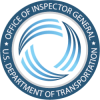What We Looked AtAdvanced Air Mobility (AAM) is a Government and industry initiative to develop an air transportation system between and within rural and urban locations. This new technology, including highly automated hybrid and electric vertical takeoff and landing (eVTOL) aircraft, promises many benefits. However, the Federal Aviation Administration's (FAA) regulations are still primarily intended for traditional small aircraft, creating challenges for FAA. Given these challenges, the Ranking Members of the House Committee on Transportation and Infrastructure and its Subcommittee on Aviation requested this audit. Our objective was to determine FAA's progress in establishing the basis for certification of AAM aircraft, including ensuring the safety of novel features and providing guidance to applicants.What We FoundRegulatory, management, and communication issues hindered FAA's progress in certifying AAM aircraft, and challenges remain. Given their unique features, AAM aircraft do not fully fit into FAA's existing airworthiness standards. For over 4 years, FAA made limited progress in determining which certification path to use. One issue is that, over 2 decades ago, FAA defined an aircraft category called powered-lift that is applicable to some AAM aircraft. However, FAA never established corresponding airworthiness standards and operational regulations, leading to significant internal debates and a lack of consensus on how to proceed. This lack of consensus affected rulemaking efforts that hindered the Agency's progress. Further, FAA changed its certification path, which caught industry by surprise. The Agency will likely continue to face challenges as it progresses through the certification process for AAM aircraft, including reviewing novel features and establishing new operational regulations. Finally, FAA has not sufficiently established policies and procedures for its Center for Emerging Concepts and Innovation, or communicated about its role in AAM certification. Continued ineffective coordination and communication, as well as the lack of timely decision making and established policies, could further hinder progress.Our RecommendationsFAA concurred with our four recommendations to enhance FAA's regulatory efforts and communication regarding the AAM aircraft certification process. We consider all recommendations resolved but open pending completion of planned actions.
Date Issued
Submitting OIG
Department of Transportation OIG
Other Participating OIGs
Department of Transportation OIG
Agencies Reviewed/Investigated
Department of Transportation
Components
Federal Aviation Administration
Report Number
AV2023037
Report Description
Report Type
Audit
Agency Wide
Yes
Number of Recommendations
0
Questioned Costs
$0
Funds for Better Use
$0


